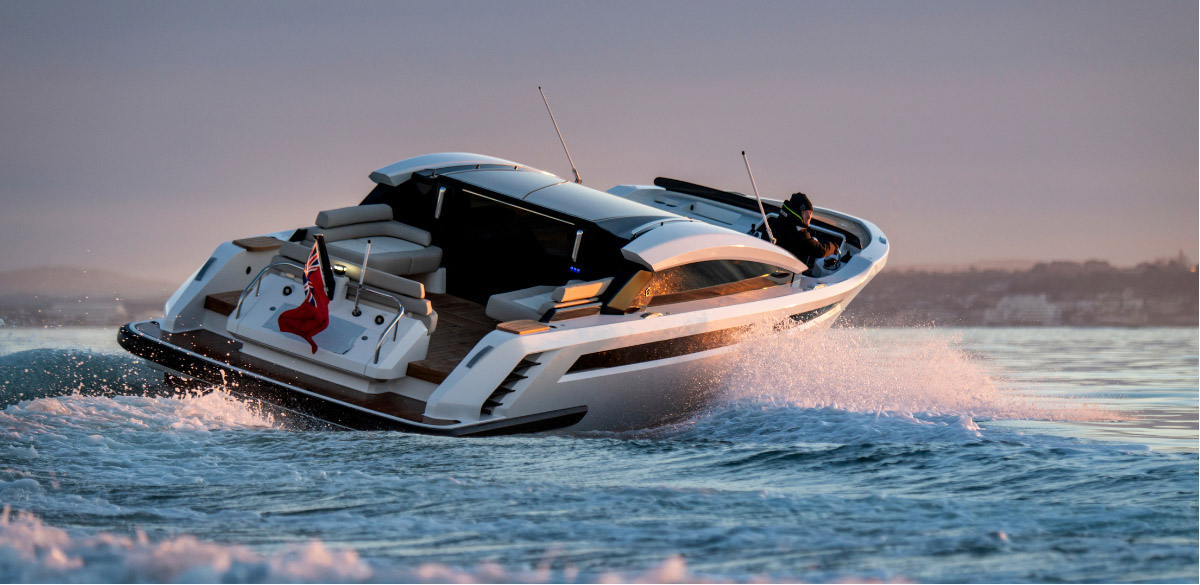The superyacht marketplace is constantly evolving: Bigger. Better. Faster. Further. The operations of a tender are inextricably linked to that of the mothership and, as owners push to explore the far-flung corners of the earth, spend more time aboard and in a more sustainably considered way, the tenders they carry must also evolve to meet these changing requirements.
The last 10 years have seen tender design become far more considered and refined. To make the journey from dockside to aft deck in style, a mothership-matching limousine tender is the transport method of choice. In more recent years, we’ve seen tenders increase in size and a demand for utility craft and open tenders that serve a whole new set of operational needs.
“When it comes to larger superyachts, we find clients frequently requesting a small fleet of tenders, perhaps three or even four, for the same vessel in order to fulfil an array of roles – the diversity of which simply hasn’t been seen before,” comments Richard Faulkner, Founder and CEO of Compass Tenders. There are over 65 superyachts on the water in excess of 100 metres in length, and at this top end of the market, larger superyachts and larger tenders go hand in hand.
“Owners want to travel between the superyacht and the shore in luxury, in a tender appointed to the same superlative standards as their superyacht and often in complementary style. They want to spend extended days exploring the coastline or enjoying various water sports and expect premium performance and stability in every instance,” explains Faulkner.
It’s not only the designs that have had to adapt, but construction materials and propulsion methods. Faulkner advises that they’ve seen a marked move away from jet propulsion, however, stabilisers to smooth motion both underway and at anchor are now expected as standard. “We are using more elaborate and detailed tooling to produce various components, and each time it’s a refinement and advancement on the last – we are continuously reviewing, researching and progressing in order to remain at the forefront of tender design and build.” Faulkner elaborates further: “You wouldn’t think it, but one of the biggest changes to come about in recent years is lighting. RGB and rope lighting effects can dramatically enhance the onboard ambience and more effective, advanced optics have heightened the possibilities for night-time operation.”
Other onboard comforts and amenities, such as climate control and integrated audiovisual systems, have made longer periods spent aboard a tender more acceptable.
The use of glass has also increased, just as it has in superyacht design and build, and it’s commonly now a practical, structural, and aesthetic element of a tender’s make up.
The biggest change to the tender market in recent years, has come in the form of utility vessels. Acting as an ‘SUV of the seas’, these versatile craft can operate as satellite platforms for a full day of water sports, with a day head, galley equipment, cushioned sun pads and shade. “Absolutely, the SUV of the seas has become a whole new trend. We’ve built utility boats with hydraulic bow doors to facilitate easy beach landings and disembarkation, and other clients have encouraged us to push the design envelope even further, turning their tenders into ‘floating’ beach clubs,” says Faulkner.
Compass launched their first catamaran tender in 2020, in response to this trend. “It’s a gamechanger!” declares Faulkner. “As a platform it’s exceptionally stable and the wide beam allows for an enormous and versatile space – you can carry extra guests in comfort, water sports equipment, scuba diving gear and even small vehicles, like quad bikes, for exploring ashore.” Compass completed build of a second catamaran tender this year and have another under construction.
Looking to the future of tender design and build, the picture is harder to define. Faulkner comments: “Alternative power sources and propulsion methods are undoubtedly going to come into play but at this time, it’s unclear whether we’ll see widespread uptake of this in the next two years, five years, or ten. Technology is advancing at an incredible pace but still range is an operational issue an often, before something has a chance to take hold in the marketplace, it’s replaced by the next ‘new’ thing. As an industry sector, I don’t think we’ve settled on the answer yet.”
Faulkner agrees, however, that non-fossil fuel solutions and tender propulsion methods are where there’s most potential for change. As owners become more environmentally considered in their actions and a younger demographic of eco-conscious owners enter the industry, green solutions are naturally becoming more and more sought after. If owner usage habits remain as they are for superyachts, then we could see a need for greater autonomy come into play with tenders. Negating the need to refuel and extending range capability would once again widen the array of purposes a tender is able to fulfil.
Compass Tenders are a company widely regarded as trend setters rather than followers, but the market will only evolve at the pace set by the owners and those with more progressive demands for the look and purpose of their tenders. “I don’t think owners will ever stop turning to Compass for individual styling solutions, and they appreciate our experience in this area. We pay exacting attention to a client’s requests and our team have exceptional vision and commitment to making any request a reality,” concludes Faulkner.





























0 Comments